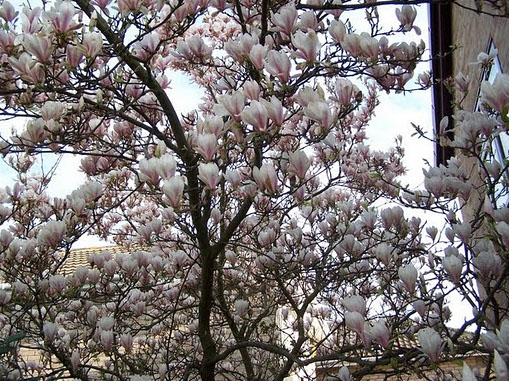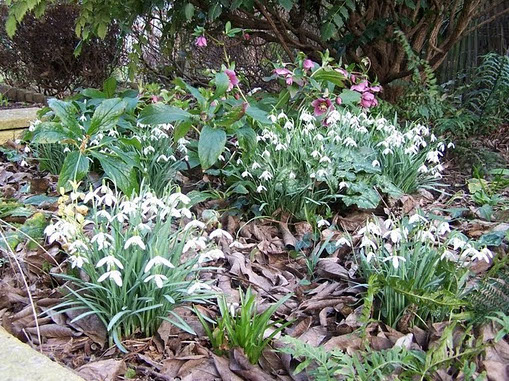To the western side of the house a magnolia tree dominates. Since we planted a small magnolia over thirty years ago a side extension has been added to the house. During construction the poor young magnolia had quite a battering which in many ways sculpted the shape of the tree. Most years in April it is loaded with flowers. From the upstairs windows we can ‘stand’ in the canopy with the birds.


Home
About Us
Allotments
Garden Equipment
Seed Suppliers
Manure Problems
Children's Pages
GLA Blog
Weather Blog
School Veg Patch
Useful Links
Magnolia/Woodlamd Spring Garden

During spring this area of the garden receives midday sun and dappled shade but during summer when the magnolia is in full leaf the ground is much more densely shaded. For this reason and the fact that this area gives us one of the main views of the garden from inside the house, we have planted spring flowering shade loving plants here. We can enjoy the view when it is too cold or miserable to venture outdoors in late winter/early spring.
In February clumps of snowdrops push through the leaf litter created by the magnolia and are the first flowers of the season. These are followed by a variety of hellebores which were newly planted in 2010, A collection of plants was added to the one mature hellebore already planted and seeding itself in this area – the intention being to add a variety of colours. There are double and single varieties which should cross pollinate and produce some interesting mixes. After flowering the hellebores provide leaf cover.

Other flowering plants in this area are native primroses, native wood anemones, hardy cyclamen, native cowslips, vinca, dicentra formosa and self sown violets. We started off with just one violet planted elsewhere in the garden but these have now seeded everywhere and could almost be classed as weeds. The hardy cyclamen not only provide flowers but have very attractive leaves. These also have self seeded everywhere and not just in the garden. I’m hoping to add some cyclamen coum to the cyclamen Hederifolium already planted. I did try to plant some native bluebells too but unfortunately these don’t appear to have taken and are nowhere in sight. There are a couple of pulmonarias that I am not convinced are totally happy here so they may be moved.
Besides flowering plants there are several ferns some of which are evergreen.
Marking the boundary of this area is a very mature mahonia. Being evergreen this not only provides cover for birds during winter but often shelters the ground under it providing them with foraging areas during freezing conditions. If the birds leave the flower buds in tact this bush produces sweetly scented flowers around February.
Along the boundary fence are pyracantha, wisteria, winter jasmine and a climbing rose.
Birds love this area so bird feeders are hung from the branches of the magnolia and a bird table is set up between the magnolia and the house. We have a really good view of visiting birds from one of our house windows. An old tree stump propped against the magnolia trunk had been impregnated with oyster mushroom spawn but so far we have seen no sign of any mushrooms.
The shady area is at a higher level than the house and so is held back by a low wall. Between the wall and house is a paved pathway which houses a variety of tubs contain various bulbs and lily of the valley which also add colour from April onwards.
This area adjoins the bird bath garden and ends in a small group of shrubs - a couple of small rhododendron, a spirea and a weigela.















|<<
>>|
15 - 15
<
>
Our Plot at Green Lane Allotments Blog | A Gardener's Weather Diary | School Vegetable Patch Website
© Our Plot on Green Lane Allotments - Please email me if you wish to use any of this site's content